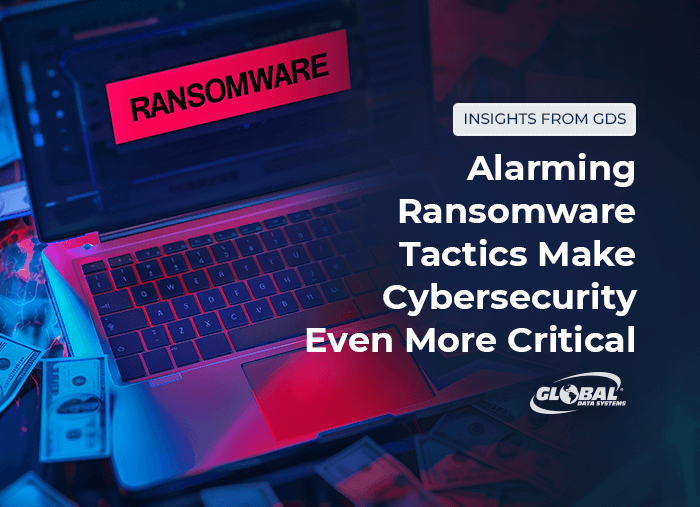The National Security Agency recently issued an urgent warning about threats to operational technology (OT) systems and critical infrastructure. Multiple federal agencies, including the Cybersecurity and Infrastructure Security Agency (CISA) and Federal Bureau of Investigation (FBI), coauthored a report highlighting the threat of pro-Russian hacktivist groups. The report provides recommendations for hardening OT systems against threat actors.
Customers don’t want to wait on hold to speak with an agent, only to be transferred to a different agent. They don’t want to repeat their issue multiple times to different agents. They expect the agent who first picks up the call to resolve their problem quickly and accurately.
There is only one surefire way to protect your networked computer systems from unauthorized access, malware attacks and other security breaches.
Most American workers prefer remote and hybrid work over traditional in-person work models. In a recent Morning Consult survey, 2% of employed adults in the U.S. chose hybrid work, and 23% preferred to be fully remote. Just 46% wanted to work in the office exclusively.
Cyberattacks are relentless and complex, with many attempting to exploit multiple vulnerabilities to infiltrate their target. No security tool, on its own, can stop all threats. That’s why it’s critical to implement a layered network security strategy.
Thanks in large part to 24x7 connectivity, consumers have come to expect fast response from the companies they do business with. Now, citizens have come to expect the same level of service and communication from government agencies. They expect to have simple access to accurate, up-to-date information and seamless communication with the right government personnel. They also expect services to be delivered and problems to be solved quickly, effectively and transparently.
Most organizations are keenly aware of the current cyber threat climate. They see the headlines about large enterprises and government agencies being hacked, and they’re making major investments to upgrade their security infrastructure and strategy.
Microsoft 365 licensing just got more complicated.
Partnering with a managed services provider (MSP) makes good business sense, given the complexity of the IT environment and tech talent shortage. More organizations are turning to top managed service providers to support their technology assets and address growing security threats. Managed service provider companies also give customers the flexibility to adapt to new opportunities and changing market conditions.
How secure is your IT environment? Probably not as secure as you think.
CFO tells us that 75% of security professionals have observed an increase in cyberattacks over the past year. These attacks have a major price tag attached. The global average cost of a data breach in 2023 was $4.45 million, a 15% increase over three years, highlighting the growing financial burden on organizations, according to IBM.
Security awareness training helps strengthen the weakest link in the security chain — humans. A well-designed training program will help users understand security risks, recognize threats and avoid falling victim to social engineering attacks.
Many cyberattacks exploit multiple vulnerabilities across the IT environment. Traditional security tools are often unable to combat these complex, multi-vector attacks.
For most small organizations, the decision to outsource IT functions to a managed services provider (MSP) is typically easy. It doesn’t make economic sense to hire an IT professional to manage and maintain the organization’s systems and network. Outsourcing provides access to IT expertise and responsive support, ensuring that staff stay productive and focused on the organization’s core business.
Cybersecurity is much more than a technology tool. It’s a strategy, mindset and set of best practices that are integrated into every aspect of the business. To achieve truly effective cybersecurity, stakeholders need to have strategic conversations about the most likely threats and their potential impact. Only then can the organization select the right tools and ensure they have the resources to achieve their security objectives.
In today’s world, understanding and preventing data spillage is a must. Why?
Today's business environments are more interconnected than ever before. Choosing the right business IT solutions provider is essential for fostering operational efficiency, ensuring seamless communication, and maintaining a competitive edge. As IT infrastructure forms the backbone of modern enterprises, the right provider can catalyze growth, streamline processes, and fortify cybersecurity protocols.
Partnering with a managed services provider (MSP) makes good business sense, given the complexity of the IT environment and tech talent shortage. More organizations are turning to MSPs to support their technology assets and address growing security threats. MSPs also give customers the flexibility to adapt to new opportunities and changing market conditions.
Today’s digital landscape is constantly growing, changing, and evolving. If you’re having trouble keeping your organization’s IT needs up to date, you’re certainly not alone. Yet, effective IT management is too crucial for your current and future success to ignore. Businesses, regardless of size or industry, rely heavily on modern technology to streamline operations, enhance productivity, and maintain a competitive edge.
Ransomware is getting real.
Although some companies are issuing return-to-office mandates, most acknowledge that remote and hybrid work is here to stay. Fact is, remote work works — studies show that employees are just as productive working remotely. Remote and hybrid work strategies also save organizations money and provide intangible benefits that make employees happier and more engaged.
As we noted in our last post about endpoint security, malicious actors increasingly exploit security vulnerabilities in endpoint devices such as laptops, tablets and smartphones. However, endpoint security has become far more difficult due to the huge numbers of remote and hybrid workers using unsupported devices to access network resources.
In our last post, we discussed some of the challenges of maintaining regulatory compliance in the age of remote work. We used the Payment Card Industry Data Security Standard (PCI DSS compliance) as an example. As organizations work to ensure compliance with the latest version, PCI DSS 4.0, they must extend those efforts to offsite staff. PCI DSS applies to remote workers who access, store, process or transmit cardholder data.
Endpoint devices facilitate remote and mobile work by allowing users to connect to the corporate network from almost anywhere. That also makes them enticing targets for malicious actors.
Technology breaks. Today’s hardware and software are extremely reliable, but something will inevitably become unstable or just stop working. To minimize the impact of such failures, it’s important to have contingency plans for the repair or replacement of your IT systems.
A company’s digital ecosystem being complete and up-to-date is no longer a luxury, but a necessity. This has made the efficiency of IT management a cornerstone for success, regardless of your company size or industry. As businesses strive to stay competitive and relevant in an increasingly interconnected world, the demand for seamless, reliable, and secure IT infrastructure has never been higher.



























